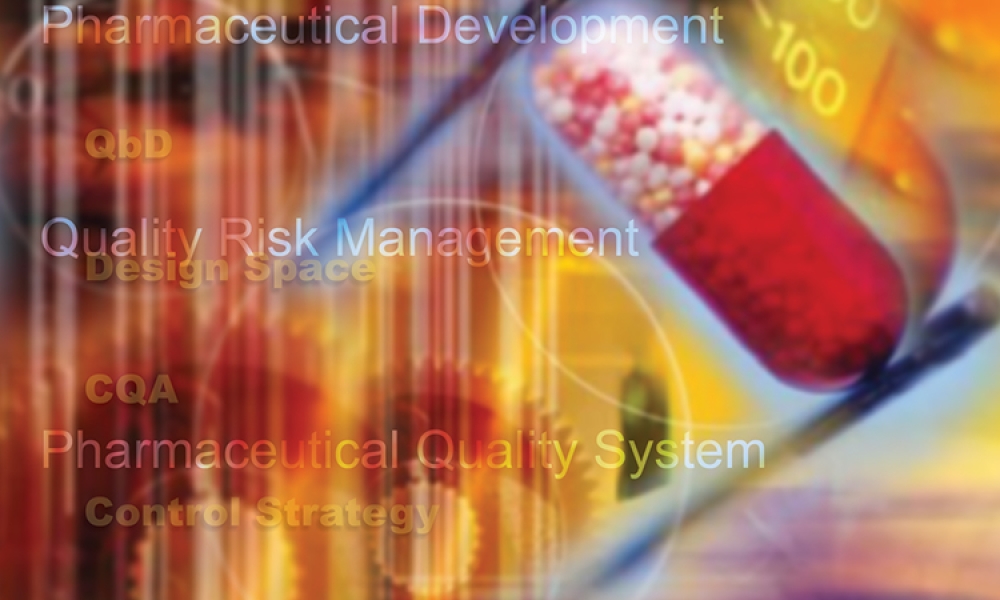Member Spotlight: Chris Potter

What attracted you to pharmaceutical engineering?
I was attracted to ISPE as an organisation that was interested in practical implementation of ICH guidelines Q8, Pharmaceutical Development and Q9, Quality Risk Management, and Q10, Pharmaceutical Quality System. At the time, I was leading a multi-disciplinary team of experienced experts from European sites of different companies to produce a “Mock P2”. I was also involved with a team applying the science- and risk-based approach on a new small molecule drug development programme for drug substance and drug product I attended what I think was ISPE’s first meeting on the science- and risk-based approach in Arlington. At that meeting I was asked to become involved in ISPE’s QbD implementation program, which subsequently became known as Product Quality Lifecycle Implementation (PQLI)®. I thought that ISPE was only for engineers, however I quickly realised the breadth of membership, including many technical and regulatory colleagues with a research and development background.
When did you join ISPE, and what are some great memories of your involvement with the organization?
I retired from AstraZeneca in late 2007 and joined ISPE in 2008 to become more involved as a volunteer in the PQLI program. ISPE leadership asked me to lead a team to deliver output on how to apply QbD to existing products. Great memories are the debates we had on topics for which there was not precedent, for example on the role of “design space” and how the “enhanced approach” could assist with obtaining “more flexible regulatory approaches”.
In 2009, as PQLI became more high-profile and there was a need to deliver output, ISPE leadership to become more involved in PQLI. As a sub-contractor to ISPE I was able to use my experience and knowledge of drug development and industry practices to assist an excellent group of colleagues to deliver PQLI Guides Part 1 – Product Realization using Quality by Design (QbD): Concepts and Principles and Part 2, Illustrative Example. This work and output has served as an excellent basis for many successful programs such as the science- and risk-based approach to process validation, which has delivered industry-leading publications and well supported training programs.
How does your role as Regulatory Advisor and Consultant to ISPE contribute to the overall mission of the organization?
My role as an Advisor has been to support industry leaders and experts to deliver successful output including articles, conferences, presentations, responses to regulatory guidance, guides and training programs. These senior individuals give vast amounts of their own and their companies time to ISPE projects and I see myself as a pair of hands assisting wherever possible in a way that adds value to ISPE. My activity is directed by the Regulatory Affairs Division of ISPE.
What special initiatives are you currently working on in the US and in Europe?
Currently, I am supporting the Quality Metrics team. This team was given high profile by ISPE in summer 2013 along with the Drug Shortages Team. I have worked with this team for five years as we have responded to FDA’s call for action by conducting two Pilot Programs and have provided two data-driven responses to FDA draft guidances in 2015 and 2017. ISPE’s Quality Metrics initiative has evolved into an industry-led proposal for Advancing Pharmaceutical Quality. This proposal is currently being beta-tested with colleagues and senior leaders in industry. Although the original Quality Metrics program was very US-centric, the new proposal is viewed as having more global application.
Based on my industry background and involvement with PQLI I am also supporting the team working on Expedited Programs for Patients, formerly known as Breakthrough Therapy Program. This team is examining and discussing with regulators Chemistry, Manufacturing and Control (CMC) issues associated accelerated development of exciting new molecules with benefit for patients.
Any comments on the future of the industry?
There has been resurgence in new products, especially of a biotech origin. With many of these products being developed for small patient populations, there is a need to balance cost and speed of development with safety and efficacy, which leads to many CMC challenges. Additionally, there is much work to be conducted globally, much of it under the auspices of ICH. There are still challenges to deliver many major continual improvement projects globally. It is hoped and expected that ICH Q12, Technical and Regulatory Considerations for Pharmaceutical Product Lifecycle Management, can make progress on this topic.



